I spotted these two pointing the way down Cedar Rock Mtn. a few weeks ago. The bend is rather high but the fact that there are two of them, pointing to exactly the same place - the only way up and down the mountain - makes me think that they are indeed trail trees.
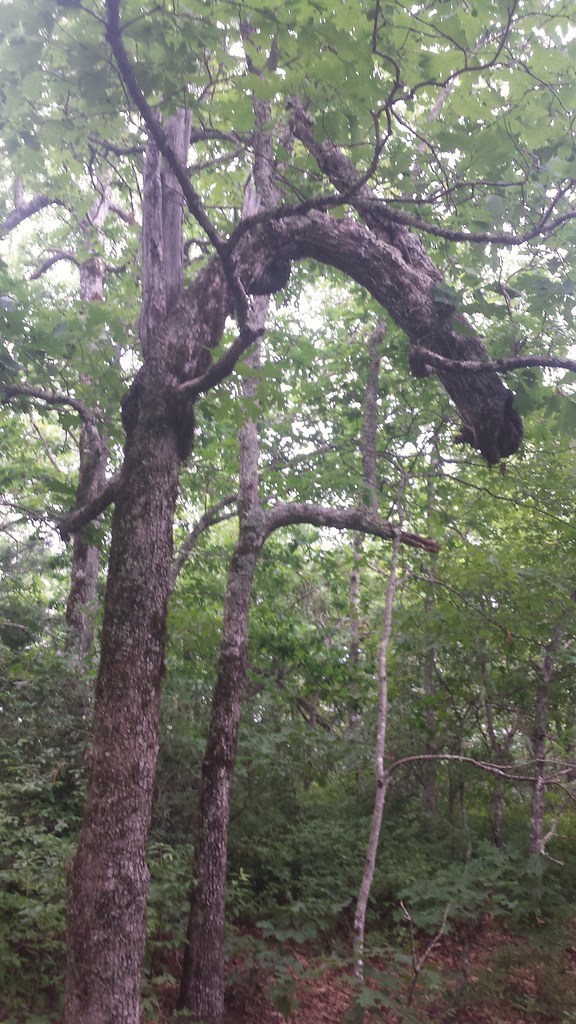
Here is another pair of strangely bent trees. These are on top of Bald Knob and are pointing to a pile of rocks. While almost all trail trees are exclusively white oaks these two trees are interestingly maples. Normally I would discount them based on species alone but since there are two, with the exact same bend, pointing at a pile of rocks puts them in the Yes category.
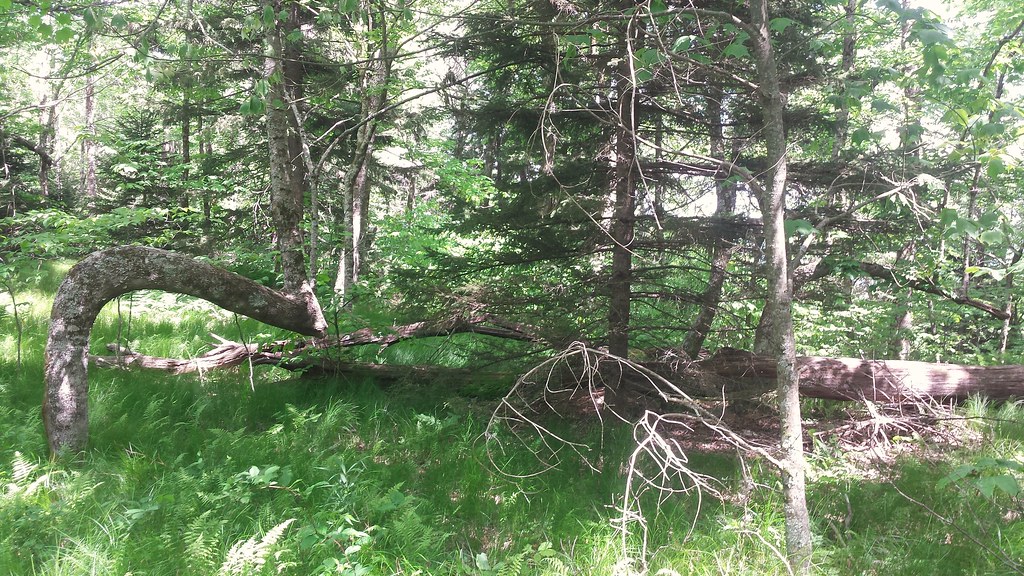
A bad picture but here is the point of the second tree:

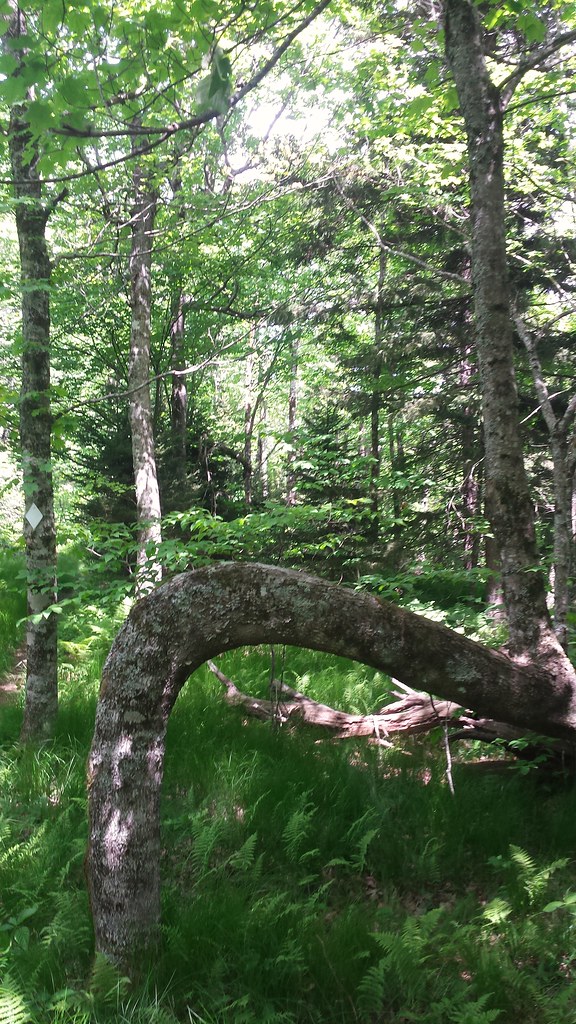
I found this interesting tree on Trace Ridge. It is a white oak so the species is right and although the bend isn't quite as distinct as on other ones it does have the elbow like feature and the second trunk that is found on other known trail trees so I am thinking this tree could very well have been intentionally bent.

Here is another one for the maybe category. I found this guy about halfway up to Clingman's Dome on Forney Ridge. It is a white oak but the bend isn't dramatic enough for me be certain it is a trail tree.
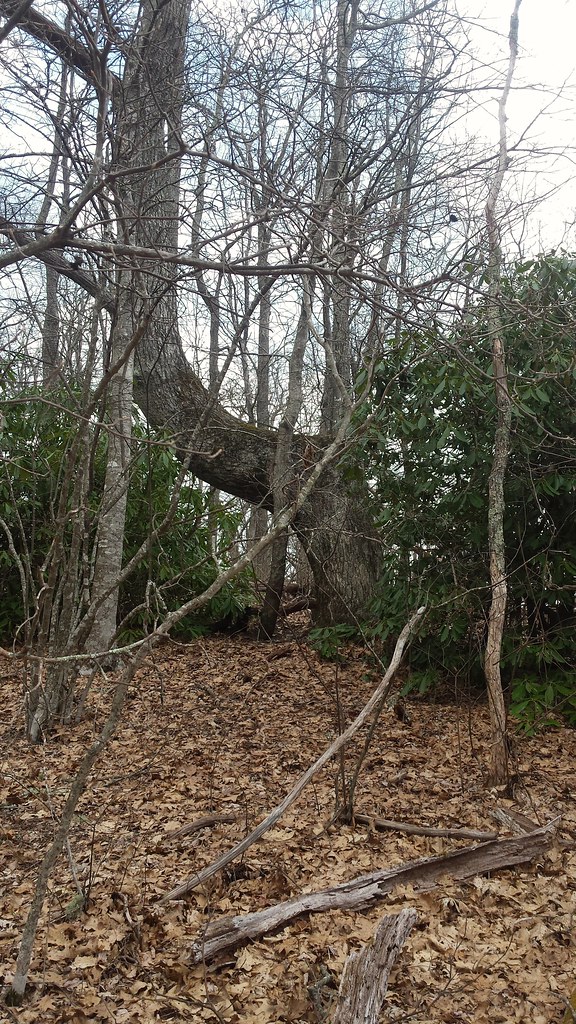
If a dramatic bend is what you are after this tree on Clawhammer Mountain fits the bill. I have no doubt that this tree was intentionally bent by humans. Its location makes me think that it was marking the way along the ridge top. I know what you are thinking- I hear it all the time when I talk to people about these trees - that it is not big enough to be old enough to have been around in the time of the Cherokees. I am not convinced of that at all and ask that you consider all that a tree in the forest has to go through. A sapling might have to wait 20 years or more before another tree nearby falls and opens up enough of the canopy for it to really begin growing. I recommend reading the book The Hidden Life of Trees by Peter Wohlleben for a very good explanation of the challenges a tree faces. You also have to consider the stress that this tree must have faced when it was being deformed. The binding it went through would have been more than enough stress for it's growth to be stunted for a long time.
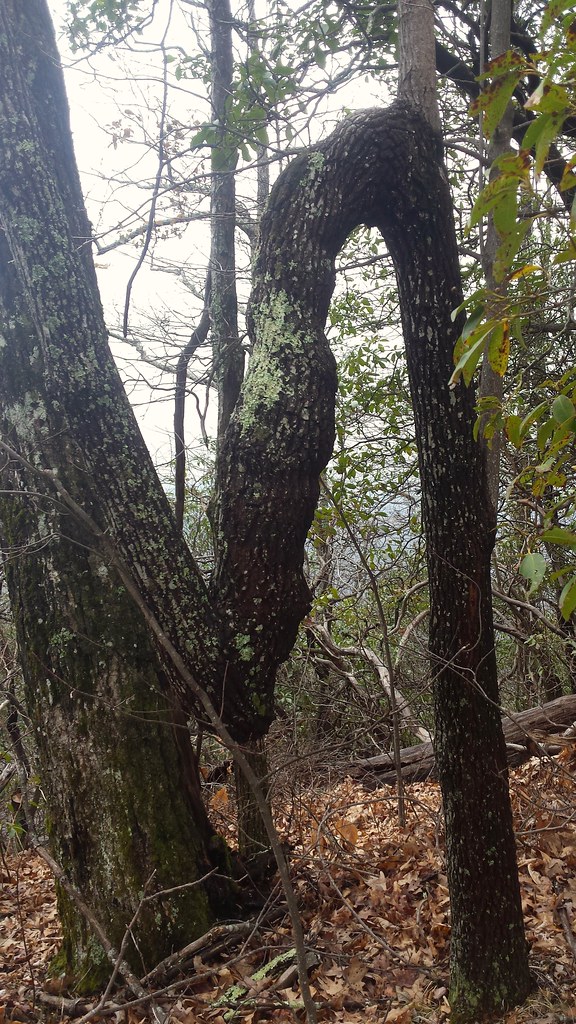
Further down the same ridge you'll find this trail tree. It is about the same size as the previous example so they could be from about the same period but this one is different because it is pointing directly at a seasonal spring/seep. It is very high on a dry ridge and if you dig directly below it's elbow you will find water. Perhaps the most famous trail tree is the one on the MST near Skinny Dip falls that also points directly at a spring. I have no doubt that this is a trail tree.
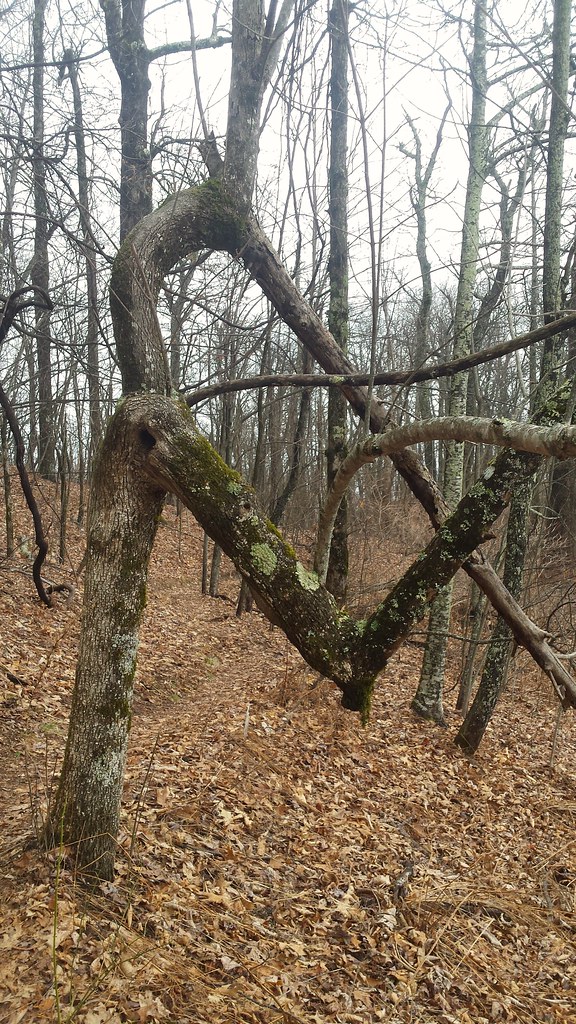
High on Sassafrass mountain you will find this old white oak with an interesting bend. I'm undecided about this one. Maybe?
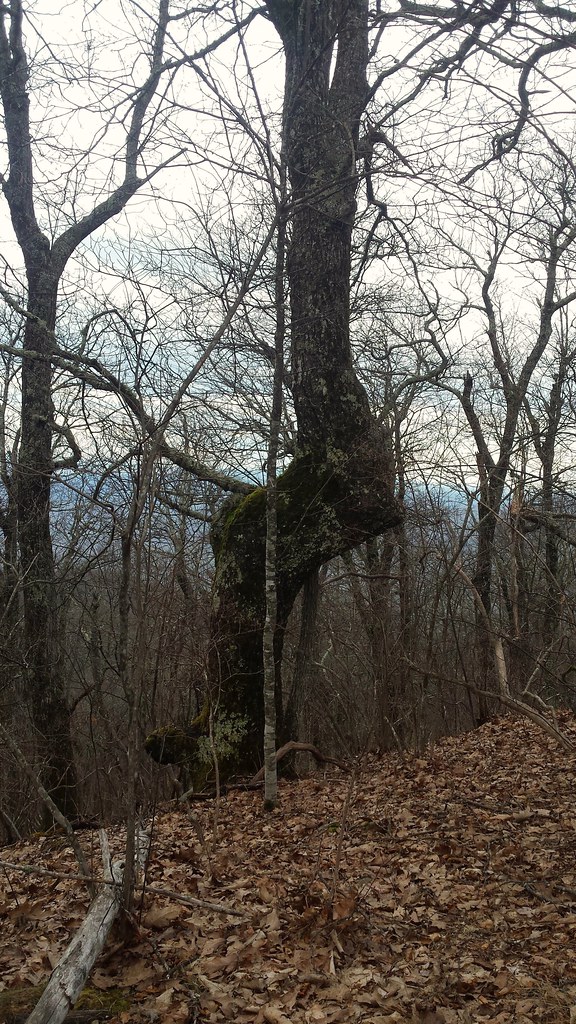
There is no indecision about this tree on the rim of Linville Gorge - it was intentionally bent by the Cherokees. A classic trail tree.
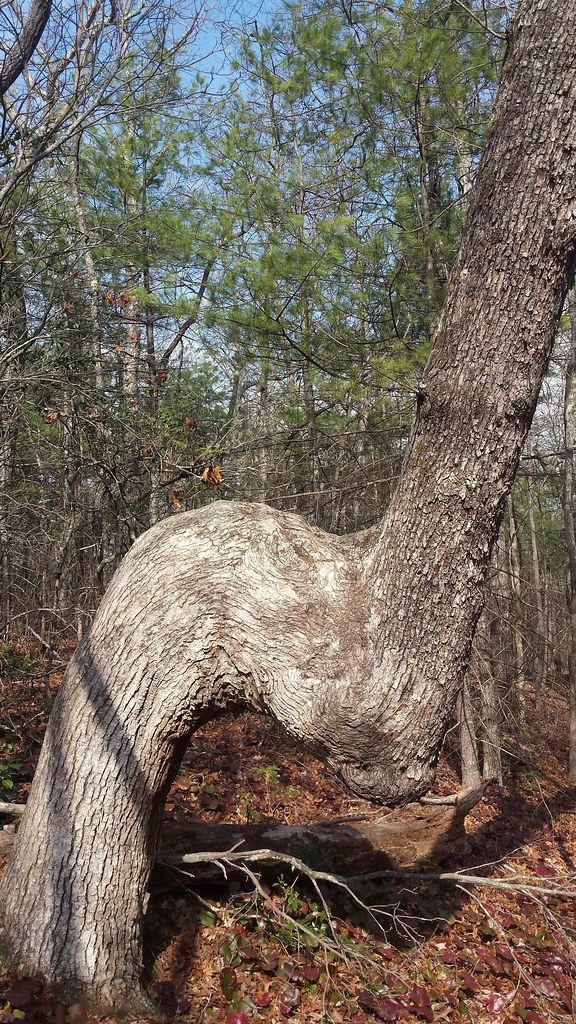
Head south to Panthertown Valley and you might stumble across this tree and wonder if it too was bent by humans for unknown reasons.
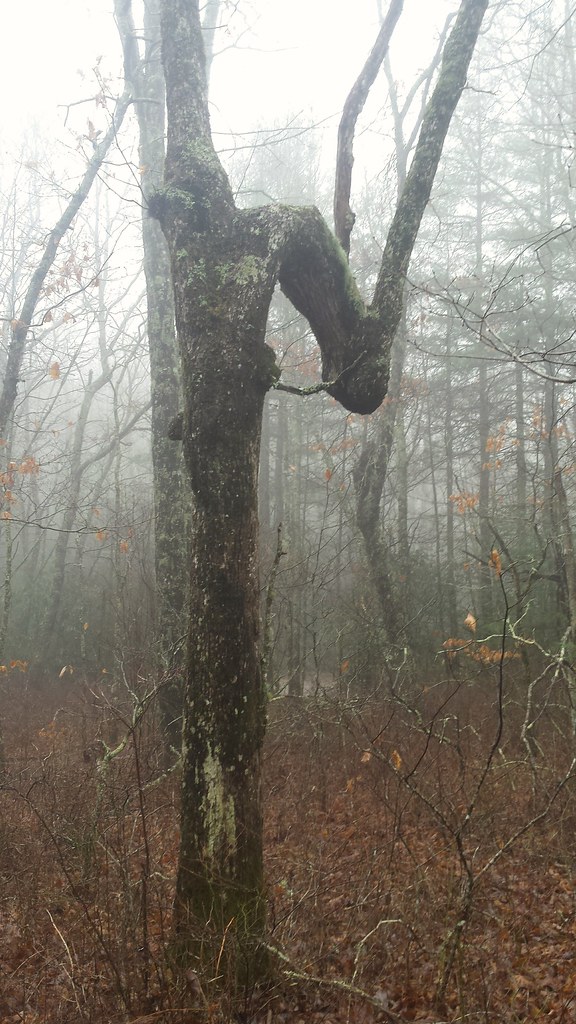
Nearby you will find this rather phallic looking tree and wonder about it as well. After scouring the forest for these trees sometimes your mind starts to play tricks on you and many trees start to look like trail trees.
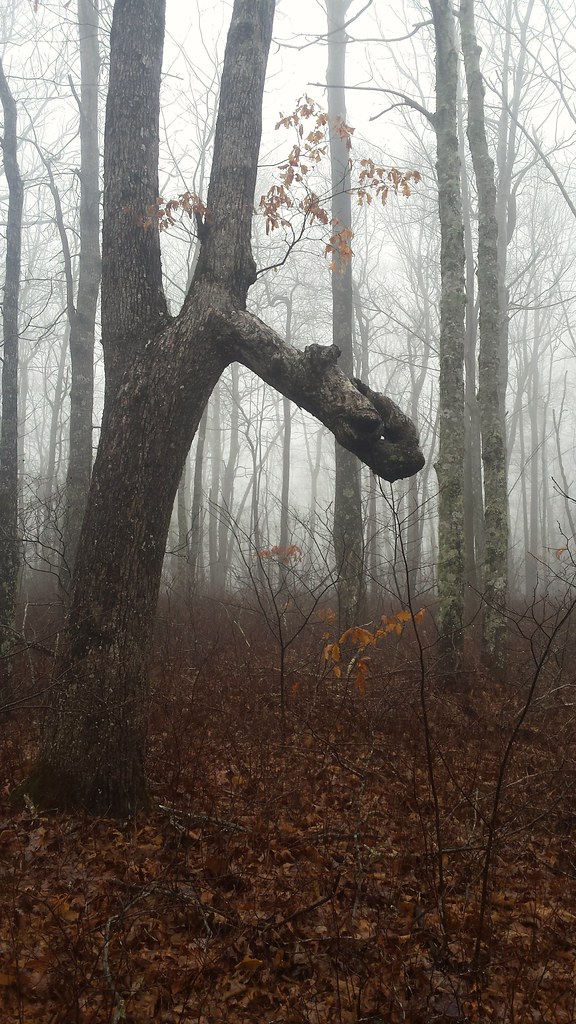
Back north to Mackey Mountain and there are no tricks about this tree. It is undoubtedly a trail tree. It is very old and the trunk has morphed into itself.
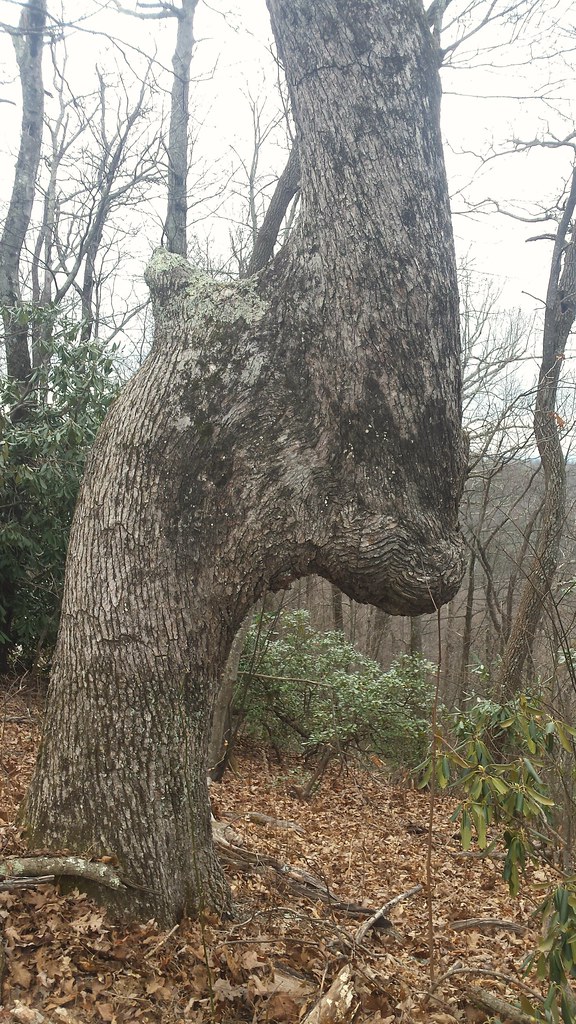
Very close to that classic example were a couple of the phallic trees that had me wondering if these trees were part of the same old marking system.
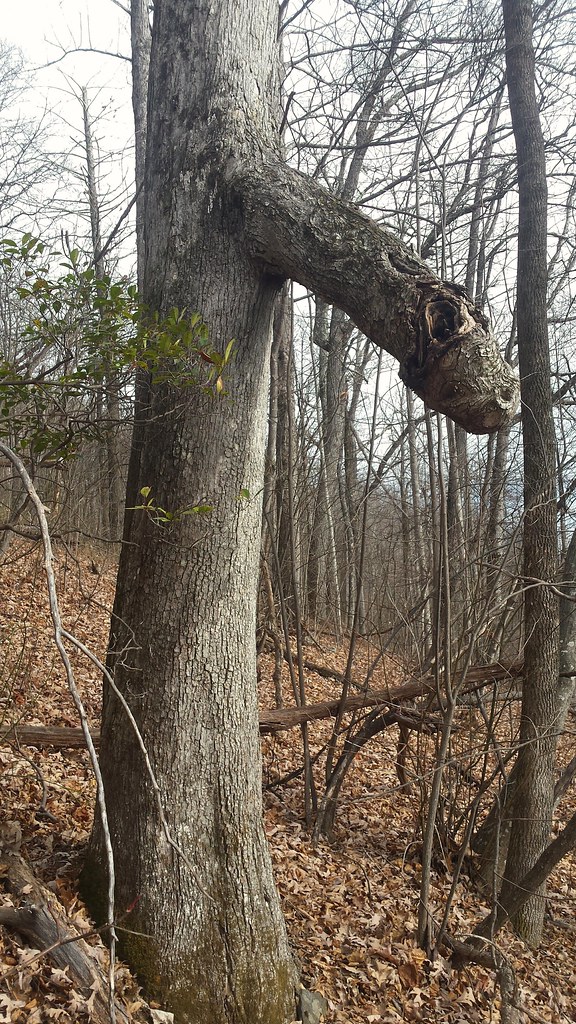


I have seen several bent trees in the Linville Gorge. I've found that they generally are trail markers, while some (so far two that I have noticed) mark camping spots. Or I guess what spots have become permanent camping spots.
ReplyDeleteHow come these trees were not fell when the rest of PNF was logged? Have you taken core samples on any to determine the true age?
ReplyDelete